How to Insulate an Attic
Properly insulating your attic can help you maintain an ideal room temperature and spend you less on energy. Read on to know why insulating an attic is important and how you should go about the process of attic insulation.
Why is Attic Insulation Important?
Most of you would agree that the attic is one of the most neglected places in the home. Whereas insulation is concerned, it is one of those spaces in home where you tend to lose a lot of heat as well as cool air. Failing to insulate it properly during summer will result in a lot of heat seep from outside. This will make your air-conditioner work more thus increasing your power bill. As much as 15-25% of energy bills are believed to be spent in maintaining an ideal room temperature against improper attic insulation. In the same way, poor attic insulation can make heat seep out of the house making you feel cold.
To sum up briefly, proper attic insulation is important for the following reasons:
- Reduce energy bills by saving money on heating and cooling your home.
- Prevent leakage of air which can involve seeping in of unhygienic air with mould and dust
- It helps prevent hot air from attic pus down into your home
- It helps properly store all your precious objects, such as photographs, in your attic and prevent them from getting damaged by heat, spores, moulds and other organisms.
How to Install Insulation in Attic?
Insulation of an attic requires identifying the main points of heat loss. This includes:
- Attic floor
- Roof
- Attic access
- Air vents
- Hot and cold air distribution ducts
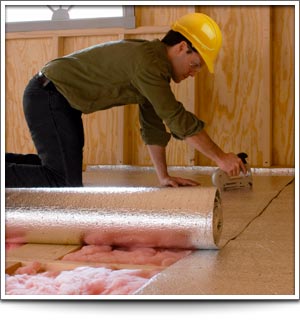
The insulating materials to be gathered include:
- An insulation kit
- Face mask
- Overalls
- Caulk
- Tape measure
- Protective gloves
- Notepad
- Pen
- A pair of scissors
Before starting work, protect yourself with a face mask, gloves and overalls. This will safeguard your skin and respiratory system from insulation materials that can cause irritation.
Insulating an Attic Floor
Properly insulating the floor of your attic can help you reduce the amount of heat that seeps out through the roof. Calculate the dimensions of the area that you have to work on. Carefully examine whether any area on the attic floor requires rectification before you can begin insulation. Look for any cracks or gaps that can hamper insulation. Decide whether your home requires a rolled or loose insulation.
Once you have checked and double-checked the floor for defects, you have to gather all the necessary materials.
Next, you have to prepare the space. Move all portable items away from the floor. Clean all traces of dust and debris from the attic floor. Apply to any area that needs repair. If the light is inadequate for you to work properly, install some temporary lighting in place to help you work properly.
Begin working at the outer wall. Lay down the moisture barrier against the surface of the floor. Pucker in the edges of the insulating material against the joists. Unroll it along the space within them. Pass the insulation material carefully under the power cables without stretching it. If the roll is bigger than the space, cut it to size before pushing all the edges against the beams. Go on doing this all through the attic and also the upper surface of the access hatch. Remember to leave an approximately 3 inch gap between any lighting fixtures and the insulation. This will eradicate fire hazards.
Insulating an Attic ceiling
Inspect your attic roof for any defects. If you can detect a leak in the ceiling or can see the joists clearly, you require fresh insulation. Buy fiberglass or batt insulation from your local hardware store. Purchasing Blown installation is not recommended as it will require you to follow strict safety guidelines. If you go for a blown installation, use the services of a professional.
Follow the manufacturer’s instructions to install insulation. Set up insulation between the joists. Make sure to close all interim seam gaps, if you are using batts. You should also take care not to compress installation while installing it.
Insulating an Attic door or entryway
The process of insulating the door of your attic actually depends on the type of attic entryway that you have. Some of the most common access points are
- Pull-down stairs
- Ceiling hatches
- Knee-wall door
If you have pull down attic stairs, you can insulate it by creating a lightweight box which is a little larger than the entryway. This will let you install it on top of the access point. You may use rigid foam board to build the box. Line the upper segment of the box with fiberglass insulation. Seal off the rough edges of the box with caulk or spray foam. This will ensure there is no escape of air. It is also recommended that you use weather-stripping in the region that surrounds the trim of the hatch.
If your attic hatch is located in the ceiling of a space that has not been conditioned (such as a garage), it is not required for you to insulate the door. But if your hatch is placed in a closet or hallway, it is recommended that you insulate the entryway. Use weather stripping to line the hatch trim. Cut two strips out of the rigid foam. Each of these should be smaller than the hatch door by about a quarter of an inch. Attach these to the door. Use fiberglass insulation to cover the foam and complete the process.
If your attic has a knee wall access door, it can be very easy for you to insulate it. Add weather stripping around the door frame and ensure that it shuts tightly. Add rigid foam insulation to the side of the door facing the attic.
Attic Stairs Insulation
Folding stairs are often sealed poorly and only have a thin strip of plywood to prevent loss of heated air. Naturally, they are a main source of heat loss even when the attic is insulated.
Check whether your attic stairs shut tightly. You may do this by applying self-adhesive weather stripping foam around the perimeter that serves as a meeting place for the plywood door and the frame. Leave out the hinge end.
Once you have sealed the opening, you can insulate it further by enclosing the stairs. This can be done by building a foam box in the attic. For this, you need some materials like:
- A rigid foam board sheet (Dimensions: ¾” x 4’ x 8’)
- A roll foil duct tape (Dimensions: 2” x 30’)
- Two roll foam tape weather stripping (Dimensions: ¾” x 17’)
- A utility knife having a straight edge
- A tube of caulking (optional)
Check these steps to know how to make a foam box for your attic.
- Begin the process by measuring the proportions of the opening. Also determine the height up to which the stairs project over the attic floor.
- Cut strips out of the foam sheet to make the sides of the box. Use the utility knife for cutting purposes. If you have problems in cutting cleanly, you may use a new blade instead. Cut the strips in such a way that they are wider than the stairs by an inch or two. This will help them project above the attic floor.
- Bend the piece. Cut from the other side.
- Use a framing square as a guide to cut the strips to the right size. Build the box and use a foil tape to join the corners. It is better to use foil tape as regular duct tape will fail to last in the heat of the attic. Apply a bead of caulking. This will help you make a better seal.
- Form a tighter seal by fixing foam tape weather stripping to the upper edge of the box. Cut a strip of foam that matches the size of the outer dimensions of the box. This will make the lid. Use foil tape to attach it to the upper surface of the attic box along one of the long edges.
- Clean the floor space surrounding the attic stairs. This will let the tape stick well. Place the box on top of the opening. This will make a square shape.
- Use foil tape strips to attach the box to the floor around the exterior. Tape along the entire edge.
- Apply a bead of caulking around the inner side of the opening to make a more compact seal.
- Close the lid before leaving the attic.
After you have finished, make sure that the insulating materials do not carry-over to other areas of your house. Put all traces of excess insulation in a bag to remove them from the attic. Wash your overalls separately from your other clothes.
Attic Insulation Cost
In New York, the cost of insulating an Attic can vary between US $300-600. If you want to enlist services of a professional, you may check the various online insulation websites to get free quotes for the cost of insulating an attic.

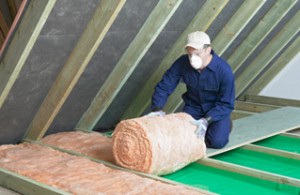
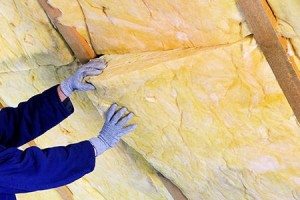

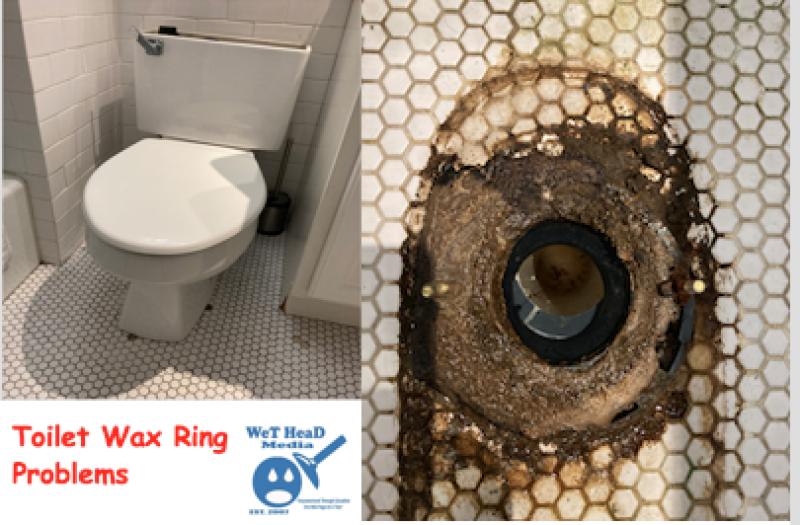
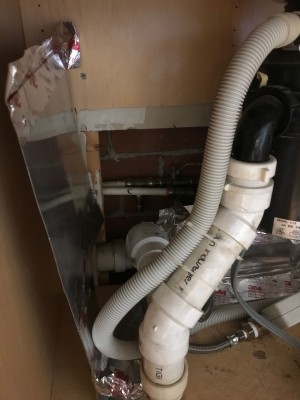
It is one of the most important elements of any building. Staircases link two or more floors and can be built and finished of different kinds of materials. From modern and simple to grand and elaborate, architects and designers are drawing up unique ways to bridge vertical distances.
Insulating an attic is very important but you have to realize as well that there are proper ways to do it. You don’t just do it alone. You need the help of the right people and professionals who exactly knows how to deal with it.